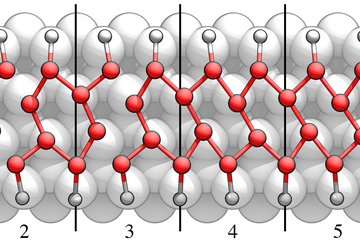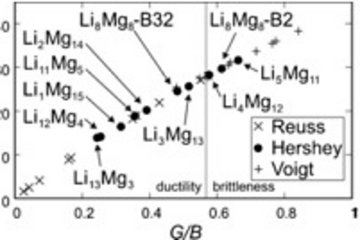All genres
1.
Journal Article
Combinatorial investigation of Hf–Ta thin films and their anodic oxides. Electrochim. Acta 55 (27), pp. 7884 - 7891 (2010)
2.
Journal Article
Gold nanoparticles partially embedded in ultrathin anodic alumina films. The Journal of Physical Chemistry C 113 (8), pp. 3105 - 3109 (2009)
3.
Journal Article
Quantitative optical recognition of highly reproducible ultra thin oxide films in microelectrochemical anodisation. Rev. Sci Instrum. 80, pp. 046106-1 - 046106-3 (2009)
4.
Journal Article
A combinatorial passivation study of Ta–Ti alloys. Corrosion Science 51, pp. 1519 - 1527 (2009)
5.
Journal Article
High-throughput synthesis and characterization of anodic oxides on Nb–Ti alloys. Electrochimica Acta 54, pp. 5973 - 5980 (2009)
6.
Journal Article
High throughput study of the anodic oxidation of Hf–Ti thin films. Electrochimica Acta 54, pp. 5171 - 5178 (2009)
7.
Journal Article
Combinatorial Electrochemistry on Al–Fe Alloys. Science and Technology of Advanced Materials 9, pp. 035009-1 - 035009-9 (2008)
8.
Journal Article
Microelectrochemical lithography: A method for direct writing of surface oxides. Electrochim. Acta 52, pp. 7865 - 7869 (2007)
9.
Talk
High throughput growth and in situ characterization of anodic oxides on Ti, Ta and Hf combinatorial alloys. “Electrochemistry: Crossing Boundaries”, GDCh, Gießen, Germany (2008)
10.
Talk
Combinatorial microelectrochemistry using an automated scanning droplet cell. 59th Annual Meeting of the International Society of Electrochemistry, Sevilla, Spanien (2008)
11.
Talk
New Approaches in Materials Science with the Scanning Droplet Cell. Seminarvortrag an der Universität von Hokkaido, Sapporo, Japan (2008)
12.
Talk
High throughput synthesis and characterization of anodic oxides on valve metal combinatorial libraries. 2nd International IMPRS-SurMat Workshop on Surface and Interface Engineering in Advanced Materials, Bochum, Germany (2008)
13.
Talk
The scanning droplet cell in corrosion research. 8th Israel Conference on Corrosion, Haifa, Israel (2008)
14.
Talk
High throughput processing and characterization of surface oxides using an automated scanning droplet cell. 212th ECS Meeting, Washington, D.C., USA (2007)
15.
Poster
High Througput Synthesis and Characterization of Ti Based Combinatorial Alloys. 7th International Symposium on Electrochemical Micro- and Nanosystems, Ein-Gedi, Israel (2008)
16.
Poster
Combinatorial microelectrochemistry with a scanning droplet cell on binary and ternary Ti, Ta and Hf alloys. International Smposium on Anodizing Science and Technology 2008, Rusutsu, Japan (2008)
17.
Poster
Combinatorial electrochemistry on valve metal alloys. 2nd International IMPRS-SurMat Workshop on Surface and Interface Engineering in Advanced Materials, Bochum, Deutschland (2008)
18.
Poster
Gold nanoparticles growth and their embedding in thin anodic alumina. 58th Annual Meeting of the International Society of Electrochemistry, Banff, Canada (2007)
19.
Poster
High throughput measurements using an automated scanning droplet cell. GDCh Wissenschaftsforum 2007, Ulm, Germany (2007)
20.
Thesis - PhD
High throughput growth, modification and characterization of thin anodic oxides on valve metals. Dissertation, Ruhr-Universität Bochum, Fakultät für Physik und Astronomie, Bochum, Germany (2009)











